Rousham House Garden Review
Perhaps one of the landscapes that garden designers most revere. We visit Rousham House Gardens designed by the great William Kent.
Monday 3 May 2010
general
In crisp Spring sunshine we were exploring the use of focal points here for our contribution to the GDRT blogfest on focal points – But we saw so much more. Pour yourself a glass of wine or make a cup of coffee, this is the full garden review:
Rousham is the archetypal 18th century English landscape garden and William Kent’s only surviving complete design. The 'landscape movement', of which Kent was a key instigator,was inspired by the paintings of Claude and Poussin, by an imagined earlier bliss and also by travels abroad. Back in this country after the Grand Tour, the well heeled were crawling the walls to replicate the temples and ruins they had seen in what was left of the Ancient World.
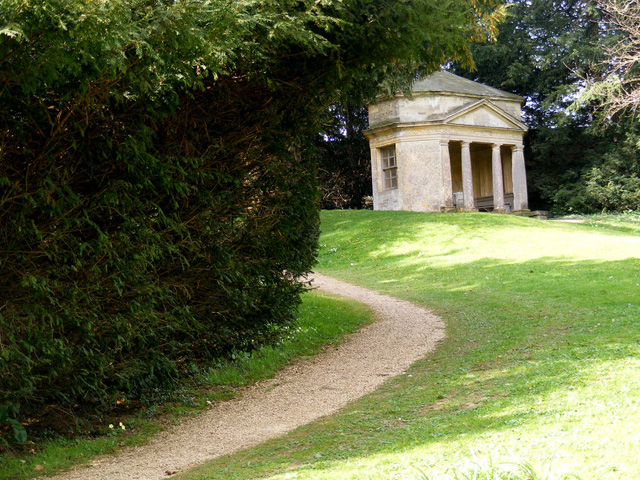
However, so much has been said and written about Rousham in books, magazines and on the net, of its origins, history and its implications for the future of landscape design that it seems wise to side step that which you can easily and enjoyably research for yourselves and give you what is very much just a personal account of the visit and our impressions:
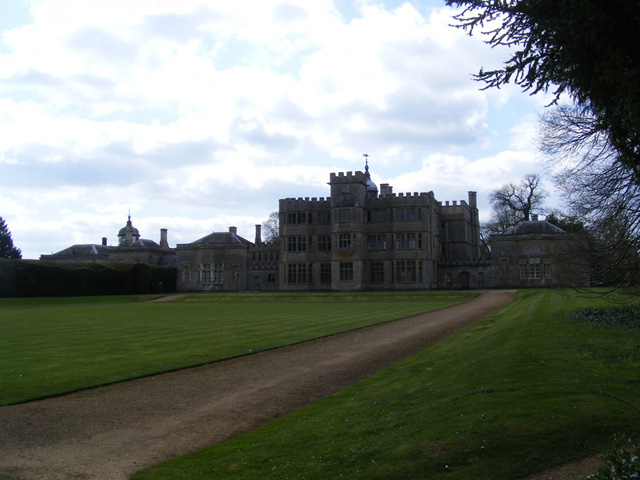
Even in crisp spring sunshine, the house is forbidding starkness itself. Bertha Mason, the mad Creole in Jane Eyre, could have leaped off those battlements! Climbers, guys please? But hang on, maybe this cold atmosphere is important. From this stiff formality you descend - and the sense of plunging is surely key - into a fantasy or fete champetre.
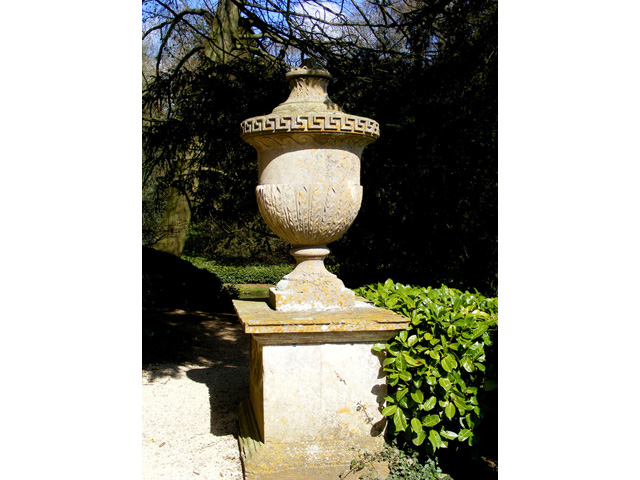
In this lush and largely green , wooded landscape you are led by secretive and circuitous paths, which are banked on either side by immaculately clipped laurels, into sunlit glades,studded with statues of gods and classical temples, herms and urns.
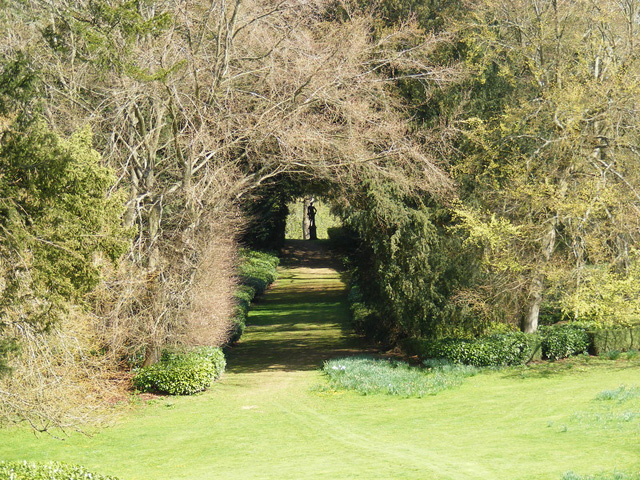
The architecture is a glory of honey coloured stone and these gem - like foci are carefully placed in the simple landscape, with enough space between to lure you forward. And woods and copses, allees and open lawns are arranged so that the architectural or focal features are on occasion concealed and then later revealed to you. Light and shade, enclosure and openess, concealment and revelation are all powerful subtexts.
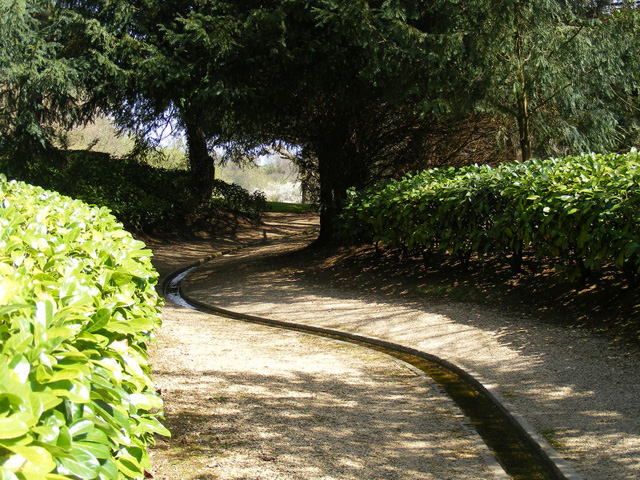
Equally important to Kent is water. Be it the Cherwell, which he left unaltered and which forms the garden's North and East boundaries.... or his own installations. Of these, the rill is arguably the best, and indeed Rousham's best feature altogether, for its curvaceous, ingenious, journey - leading charm. Tho' we fancied that Sir William had flattened somewhat a curve into the central octagonal pond. Lese - mageste on our part or what?

Elsewhere, with the passage of time, some of the water features work less perfectly than others. The famous Clary, an 18th century Head Gardener who passed on Kent's aethos for the garden, would turn these on before he showed visitors around. They must have been amazing. We discovered a former header pond for the Venus cascade that is of course long silted up. And you wonder why they are not eligible for some cash to put this right. Why is so much money wasted in poorly designed public spaces nationally when there is an almost complete treasure here, which needs and deserves an input of public funds to make it how it once was.

But that is a minor caveat. As you walk round you perceive above all Kent’s mastery of the space. The outline above shows the complex, awkward and relatively small space that Rousham is for a landscape garden. A mere 25 acres in all. It is to his credit that by tempting you this way and that he makes the internal space seems larger and less awkward. But famously, according to Horace Walpole 'he leapt the fence and saw that all nature was a garden.'
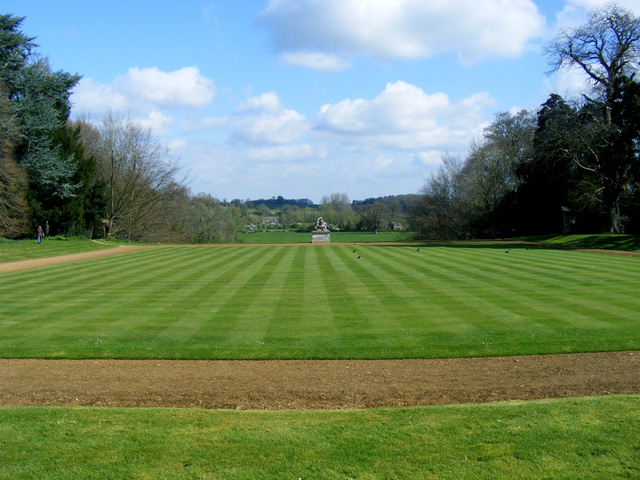
He uses views out to increase the perceived space.
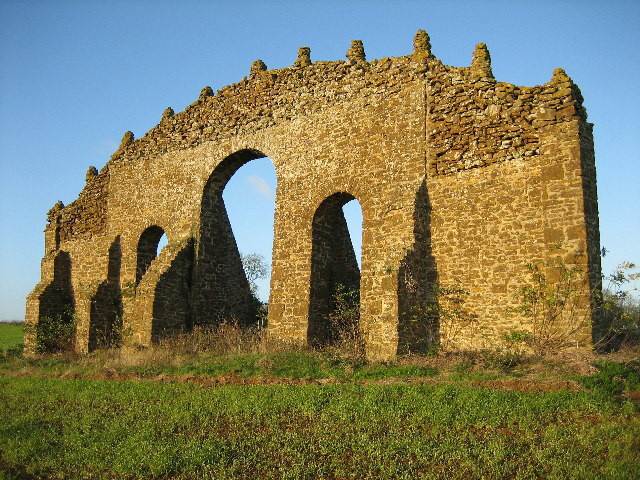
He masters this borrowed landscape, by tarting up rural buildings and even constructs a sham ruin on a distant hill.
In short as garden designers we had been kneeling at the feet of one of the masters. One of us had visited before and loved it dearly. So it was a remembered past for them too. There is a danger in introducing things to people. Will they love it as much as you want them to and indeed do you still love it so much yourself?No worries here. It wowed. And How!
Aside from 'the what', how was it to see? The greenness of the landscape and its simplicity made it restful, both to see and to be in. As a garden it is small enough to tackle leisurely, but big enough for you to feel you have achieved and experienced much.This is one of those garden visits too that looking back seems dream like- truly an arcadian idyll.
On a practical note, Rousham has some unique factors. They don’t allow kids under fifteen in. One of us, a parent, took a dim view of this. The other, who was not, relished it! And it does have to be admitted that the landscape with its easily eroded slopes, deep ponds and river combines being child tempting, child dangerous, and child fragile.
It is also frankly uncommercial and refreshingly so. You pay via an honesty system. There is no tacky, fleecing shop selling souvenirs or post cards. But also no detailed guide book. This latter struck us as a bit of a lack. Rousham has a fascinating story which they made no effort to sell or explain in any detail. One of us wanted to slavishly follow the authorised 'Clary route'. Just as an interesting academic exercise. Once a student, always a student!
Fortunately we spotted the head gardener who was kind enough to tell us that route, although she said it worked on any level. It had to, because we deviated from it very quickly, tempted off in another direction. But, it did work, she was right. We would expect no less of the great William Kent!
There were almost no keep out, private signs. You could for example walk through a nursery area and open gates that gave you almost a sense of possession. The maintenance was clean, crisp, and unifying even to the extent of the lavatory doors being painted the same cream as the garden furniture.
A largely tree and shrub landscape is easy enough given some mechanisation, but the kitchen garden, which we will show you another time with some others, would require some intensive labour and was immaculate. And the acres of laurel, to clip by hand with secateurs, strike one as a headache!
Two ancient retainers glimpsed at their chores contributed to the sense of a historically and beautifully maintained landscape, which has been in the Dormer family for almost 400 years.
The website and introductory leaflet say 'Its yours for the day, bring a pinic.' And that is a nice note. Wikipaedia says: 'A visit to Rousham today is very similar to one enjoyed by a visitor in the 18th century. The visitor is not made afraid to tread on the grass or to pause for thought on a rustic bench. In such a state a spirit of the 18th century survives at Rousham.'
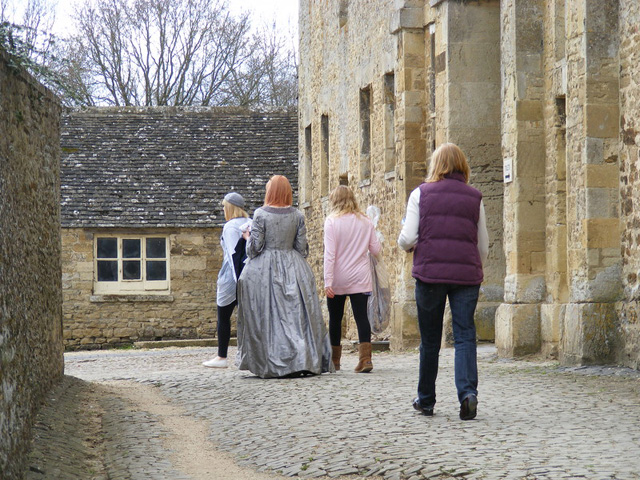
As we left, a girl in eighteenth century dress was just arriving to be filmed in the grounds and that very much says it all. Have your own mini fete champetre, complete with 18thc dress.It is a place to dream and recreate……………
Did we get the focal points covered? In spades.
Willam Kent…..Respect!
R

